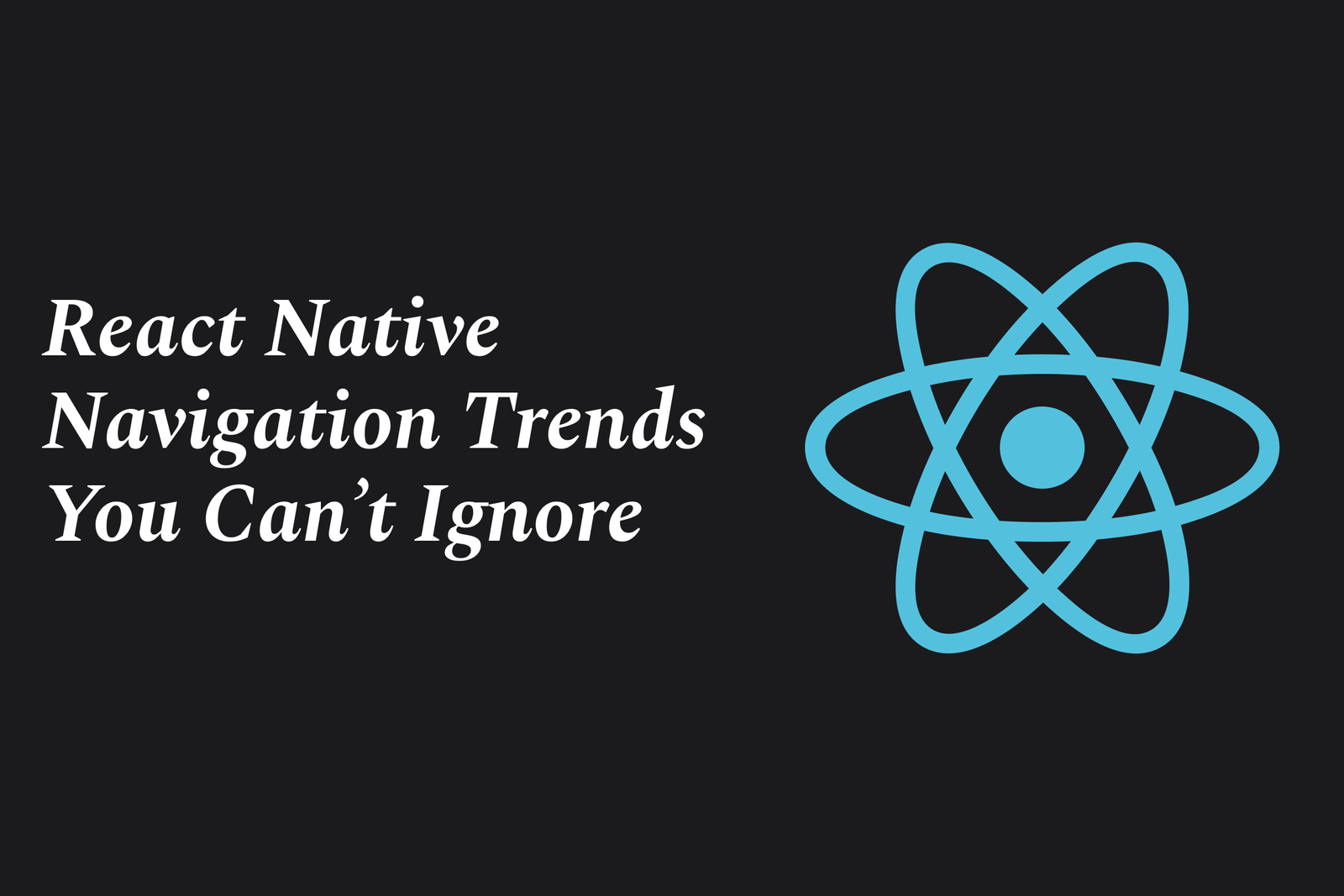React Native Navigation Trends You Can?T Ignore
React Native navigation trends focus on improving app performance, seamless deep linking, cross-platform consistency, and enhanced animations. Developers balance easy prototyping with Expo Go and advanced custom native modules for richer, smoother user experiences in mobile apps.
React Native Navigation Trends You Can’t Ignore
1 ) Expo Go for Rapid Prototyping
Expo Go remains a popular choice for quick development with React Native as it enables instant app testing without the need for native build tools. It supports pre bundled libraries allowing easy device testing and is beginner friendly. However, it lacks support for custom native modules and advanced features such as notifications, OAuth, and deep linking.
2 ) Limitations of Expo Go in Real Apps
Despite its convenience, Expo Go has limitations for production level apps. When apps require custom native modules or complex native functionality, Expo Go may fall short, prompting developers to shift towards development builds or bare React Native projects for greater flexibility and control.
3 ) Increasing Adoption of Custom Native Modules
As React Native apps grow in complexity, the demand for custom native modules is rising. This trend drives developers to move beyond Expo Go’s constraints and use development builds or customize the native side directly to integrate advanced features seamlessly.
4 ) Emphasis on Performance and User Experience
Modern React Native navigation solutions focus heavily on performance, smooth transitions, and improved user experience. Developers are adopting navigation libraries and methodologies that minimize latency and provide native like fluidity to enhance app responsiveness.
5 ) Growth of Community Driven Navigation Libraries
Open source libraries like React Navigation and React Native Navigation continue to evolve with active community support. Innovations include better deep linking support, platform specific optimizations, and easier integration with state management solutions.
6 ) Deep Linking and Universal Links Support
With users accessing apps through multiple channels, seamless deep linking is a critical navigation trend. React Native navigation tools are incorporating robust support for deep linking and universal links to ensure coherent app routing and consistent user journey.
7 ) Declarative vs. Imperative Navigation Approaches
There is ongoing discussion and experimentation regarding navigation paradigms. Declarative navigation, which aligns with React principles, is favored for its predictability, though some use cases still require imperative navigation for finer control.
8 ) Integration with Animation and Gesture Libraries
Advanced animations and gesture handling are becoming integral to navigation in React Native. Navigation trends show increased integration with libraries like Reanimated and Gesture Handler to create intuitive and engaging user interfaces.
9 ) Focus on Cross Platform Consistency
Navigation solutions strive to maintain visual and functional consistency across both iOS and Android, which is essential for brand coherence and user satisfaction. Efforts include unified APIs and platform aware navigation components.
10 ) Tooling and Developer Experience Enhancements
Improvements in developer tooling, including better debugging, hot reloading of navigation states, and enhanced documentation, are making navigation easier to implement and maintain, speeding up development cycles.
Summary:
React Native navigation is rapidly evolving, influenced by the balance between ease of development with tools like Expo Go and the need for more complex native integrations. The community’s focus is on delivering high performance, user friendly navigation solutions with robust deep linking, smooth animations, and consistency across platforms. Developers must carefully choose navigation strategies aligned with their app's complexity and user experience goals to stay ahead in the dynamic React Native ecosystem.
https://justacademy.in/news-detail/android-launchers-with-new-capabilities
https://justacademy.in/news-detail/must-have-flutter-tools-for-designers
https://justacademy.in/news-detail/android-notification-channel-changes
https://justacademy.in/news-detail/flutter-devrel-team-news
https://justacademy.in/news-detail/android-device-certification-updates
Related Posts
Java supports GDPR and data privacy by enabling secure data handling through encryption, controlled access, and precise data management. It allows developers to minimize PII exposure, ensure data confidentiality, and design workflows that comply with data protection regulations effectively.
Java code quality tools have evolved to include advanced static analysis, integrated security checks, and AI-powered code reviews. These updates help developers detect bugs, enforce coding standards, and enhance security, streamlining the development process and improving overall code reliability.
Java remains a cornerstone in big tech companies, evolving with modern features like records, pattern matching, and virtual threads. Its robust ecosystem, enhanced performance, and growing AI integrations keep it vital for both legacy systems and innovative new projects.
Java and CI/CD pipeline optimizations streamline Java application development by automating builds, tests, and deployments. They improve efficiency through parallelization, caching, and secure secrets management, enabling faster feedback loops and more reliable, scalable software delivery.
Java supports modern cryptography standards through its flexible Java Cryptography Architecture (JCA), enabling integration of advanced algorithms like AES, EdDSA, and post-quantum tools. Libraries like Bouncy Castle offer FIPS-certified, hardware-accelerated implementations for secure development.
Java 23 enhances record patterns by enabling concise, direct destructuring of record components within pattern matching, simplifying type checks and data extraction. This improvement boosts code readability and expressiveness by reducing boilerplate in handling immutable data classes.
Java remains a top choice for mobile app backends, powering scalable, secure, and high-performance server-side solutions. Latest trends include cloud-native microservices, reactive programming, and enhanced JVM optimizations, enabling efficient, flexible, and robust mobile backend development.
Java SE 24 and LTS Java SE 21 offer enhanced features and performance, while Apache Spark 4.0.0 introduces Scala 2.13 support and advanced ML and SQL capabilities. Together, they empower developers to build scalable, high-performance data applications with modern tools.
JUnit 5 modernizes Java testing with a modular architecture, improved assertions, and seamless Java 8+ support. Beyond JUnit, tools like Mockito and AssertJ enhance mocking and assertions, creating a powerful, flexible ecosystem for writing clean, efficient Java unit tests.
Java plays a pivotal role in cloud automation tools by providing a robust, platform-independent language used to build scalable automation frameworks like Jenkins and Selenium, enabling efficient CI/CD pipelines, testing, and orchestration across diverse cloud environments.










